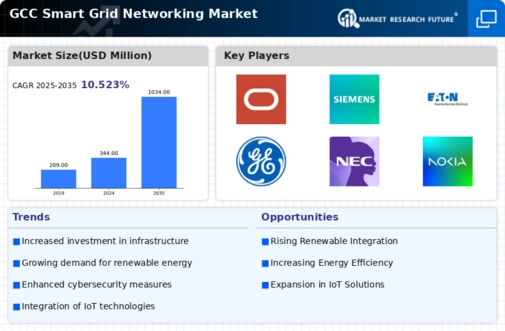GCC Smart Grid Networking Market Summary
The GCC Smart Grid Networking market is projected to grow from 344 USD Million in 2024 to 1034 USD Million by 2035, reflecting a robust growth trajectory.
Key Market Trends & Highlights
GCC Smart Grid Networking Key Trends and Highlights
- The market is expected to achieve a compound annual growth rate (CAGR) of 10.52% from 2025 to 2035.
- By 2035, the market valuation is anticipated to reach 1034 USD Million, indicating substantial growth potential.
- In 2024, the market is valued at 344 USD Million, laying a strong foundation for future expansion.
- Growing adoption of smart grid technologies due to increasing demand for energy efficiency is a major market driver.
Market Size & Forecast
| 2024 Market Size | 344 (USD Million) |
| 2035 Market Size | 1034 (USD Million) |
| CAGR (2025-2035) | 10.52% |
Major Players
Oracle, Siemens, Eaton, General Electric, NEC Corporation, ABB, Cisco Systems, Samsung Electronics, Nokia, Landis+Gyr, Trilliant, Hitachi, Schneider Electric, Honeywell





















Leave a Comment